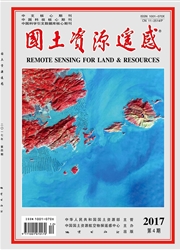

 中文摘要:
中文摘要:
遥感是获取大面积地表蒸散发量(evapotranspiration,ET)的主要手段,但是其所获得的ET是卫星过境时刻的瞬时值,而日尺度的ET才有实际意义和参考价值。目前,已有多种由瞬时ET经过时间尺度扩展成日尺度ET的方法,如恒定蒸发比法,时间积分法、正弦关系法、作物系数法和冠层阻力法等。为了对这些方法有一个清晰的了解和在应用时为方法选择提供依据,对以上5种常用方法的原理和特点进行了总结、对比和分析,并对当前该研究领域依然存在的难点问题和研究热点进行了总结。
 英文摘要:
英文摘要:
Remote sensing is a main method for obtaining large -scale land surface evaportransporation (ET), and the direct result of ET is an instantaneous value estimated at the passing time of satellite. Therefore only the daily evapotranspiration has practical significance. Recently, many ET time scale extrapolation methods have been proposed, such as constant evaporative fraction method, time integration method, sinusoid method, crop coefficient method and canopy resistance method. In order to provide readers with clear outlines about the methods and tell readers what is the proper justification when these methods are used, this paper attempted to summarize and make a comparison of the above 5 common methods based on their principles and characteristics. The results obtained show that each method has its own advantages and disadvantages, and hence researchers should consider features of the study area and the data to assure the best selection. What' s more, there is a summarization about the existing difficulties and the research hotspots.
 同期刊论文项目
同期刊论文项目
 同项目期刊论文
同项目期刊论文
 Impact of the Spatial Domain Size on the Performance of the Ts-VI Triangle Method in Terrestrial Eva
Impact of the Spatial Domain Size on the Performance of the Ts-VI Triangle Method in Terrestrial Eva Scenario-Based Impact Assessment of Land Use/Cover and Climate Changes on Watershed Hydrology in Hei
Scenario-Based Impact Assessment of Land Use/Cover and Climate Changes on Watershed Hydrology in Hei Impact of the Spatial Domain Size on the Performance of the T-s-VI Triangle Method in Terrestrial Ev
Impact of the Spatial Domain Size on the Performance of the T-s-VI Triangle Method in Terrestrial Ev Estimation of regional evapotranspiration based on remote sensing: case study in the Heihe River Bas
Estimation of regional evapotranspiration based on remote sensing: case study in the Heihe River Bas Using Simplified Thermal Inertia to Determine the Theoretical Dry Line in Feature Space for Evapotra
Using Simplified Thermal Inertia to Determine the Theoretical Dry Line in Feature Space for Evapotra 期刊信息
期刊信息
